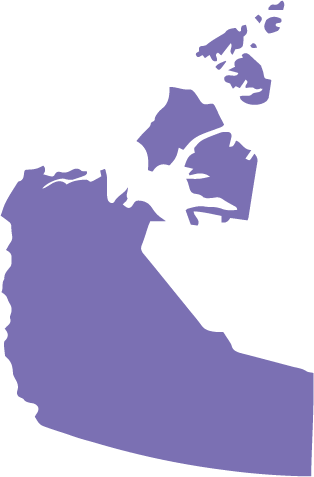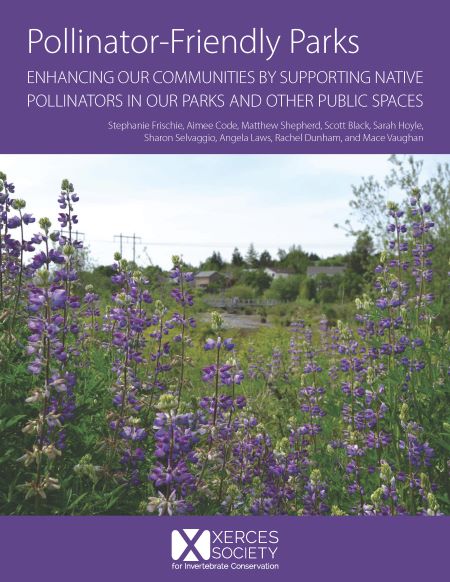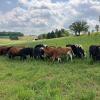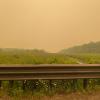These resources provide valuable information that is applicable throughout the United States and Canada. Newest documents are listed first.
IPI Database:
The IPI database contains summaries of research articles on pesticides, their effects on invertebrates, and pesticide movement in the environment. Articles have been reviewed and summarized to highlight key findings by Xerces Society staff.
Supporting Ecologically Sound Mosquito Management: Protecting Pollinators from Pesticides:
This Xerces Society fact sheet provides a brief overview of mosquito management methods that protect both people and pollinators, plus two case studies in effective mosquito management.
Smarter Pest Management: Pollinator Protection for Cities and Campuses:
This Xerces Society fact sheet introduces to city and campus land managers the concept of integrated pest management (IPM), a system that emphasizes prevention first and seeks to eliminate the underlying causes of plant diseases, weeds, and insect problems rather than relying on routine use of pesticides.
Organic Pesticides: Minimizing Risks to Pollinators and Beneficial Insects:
These Xerces Society guidelines provide a brief overview of how to select and apply pesticides for organic farm operations while minimizing pollinator mortality. Many of the practices outlined here for protecting pollinators also can help to protect beneficial insects such as parasitoid wasps and flies; predaceous wasps, flies, and beetles; ambush and assassin bugs; lacewings; and others. The presence of these insects can further reduce pest pressure and the need for chemical treatments.
Common Organic-Allowed Pesticides: A Comparative Overview:
Intended as a companion document to Organic Pesticides: Minimizing Risks to Pollinators and Beneficial Insects, this fact sheet is intended to be a quick reference to help you select and use organically-approved pesticides with the least impact on bees and other beneficial insects.
Smarter Pest Management: Protecting Pollinators at Home:
Most of North America’s native bee species only forage over a distance of a few hundred yards, so with a little planning, your yard can provide a safe space for bees and other pollinators to thrive. All you need to give them are flowering plants throughout the growing season, undisturbed places to nest, and protection from pesticides. This Xerces Society guide will help you with the last item, managing yard pests in a pollinator-friendly way.
Protecting Pollinators from Pesticides: Fungicide Impacts on Pollinators:
From large farms to small backyard gardens, many people use fungicides to control plant pathogens. While insecticides have long been recognized as a threat to bees and other beneficial insects, fungicides have generally been assumed to be relatively harmless. Though most fungicide exposures won’t kill a bee immediately, a growing body of research suggests that some fungicides can cause subtle yet significant harm. This Xerces Society fact sheet delves into how these impacts on pollinators occur, and offers mitigation measures and alternative pest management strategies.
Potential Risks of Releasing Native Lady Beetles:
Releasing lady beetles for biological control may seem beneficial, however this practice harms native lady beetles at collection sites, may harm local populations at release sites, and has been shown to not be effective at helping control local pest species.
Neonicotinoids in Your Garden:
This article from the Fall 2012 issue of the Xerces Society's biannual publication, Wings Magazine: Essays on Invertebrate Conservation, explores the effects of neonicotinoid pesticides in gardens.
How Neonicotinoids Can Kill Bees: The Science Behind the Role These Insecticides Play in Harming Bees:
In this Xerces Society report, we present an overview of research that clearly documents neonicotinoid impacts on bees. The report also covers what can be inferred from existing research, and identifies knowledge gaps that will need to be filled to allow for better-informed decisions about the future use and regulation of these chemicals.
Beyond the Birds and the Bees: Effects of Neonicotinoid Insecticides on Agriculturally Important Beneficial Insects:
This Xerces Society report details potential negative impacts of neonicotinoid insecticides on important beneficial insects. It also makes recommendations on how we can better protect important beneficials like beetles and wasps.
How to Reduce Bee Poisoning from Pesticides:
This detailed guide, produced jointly by the extension services of Oregon State University, Washington State University, and the University of Idaho, offers guidance on how to select and apply insecticides. Extensive tables list the toxicity to bees of dozens of chemicals and how long after application they remain hazardous to bees in the field.
Ecologically Sound Mosquito Management in Wetlands:
This Xerces Society report reviews current mosquito control practices in the United States, describes risks and benefits associated with different types of mosquito control—including direct and indirect impacts of chemical and biological controls on nontarget organisms—and provides recommendations on how to develop effective practices to manage mosquito populations while reducing pesticide use and conserving wetlands.
Insects and Roadless Forests: A Scientific Review of Causes, Consequences, and Management Alternatives:
This report outlines key aspects of bark beetle outbreaks, their relationship to fire risk, and presents alternatives to large scale logging practices. Additionally, it suggests that government efforts to stem the infestation of insects in forests across the American West may be ineffective and are unlikely to mitigate future infestation or decrease wildfire risk.
Logging to Control Insects: The Science and Myths Behind Managing Forest Insect “Pests":
This 88-page report demonstrates that industrial logging is not the solution to combating outbreaks of bark beetles or defoliators, such as tussock moth or spruce budworm. This includes a review of relevant studies on the importance of insects to forest function and the effectiveness of methods used to control forest “pest” insects, and a compilation of summaries of over 150 scientific papers and Forest Service documents.
Managing Milkweed Crop Pests: A Native Seed Industry Guide:
Increasing the availability of milkweeds is critical to monarch conservation, but seed production can be difficult. While monarchs are the most well-known milkweed specialists, other specialist milkweed-feeding insects can cause damage to valuable milkweed crops. Our guide provides management strategies for dealing with common milkweed pests including aphids, milkweed bugs, and milkweed beetles.
How to Help Your Community Create an Effective Mosquito Management Plan:
This guide will help you learn more about mosquitoes and the diverse wetland communities in which they play an important part, and give you the resources and information you need to work for the adoption of safe, effective methods of mosquito management in the places where you live and play.
Estimated Costs to Establish Wildflower Plantings Using Chemical Fallow:
This Xerces Society fact sheet provides a quick overview of the estimated costs of establishing wildflower habitat for pollinators on conventional farms.
Protecting Bees from Neonicotinoids in Your Garden:
Neonicotinoids are a group of insecticides that are used widely on farms, as well as around our homes, schools, and city landscapes. This Xerces Society brochure explains why they are a risk to bees, gives examples of neonicotinoid garden products, and gives some simple tips for protecting bees from these insecticides.
Farming with Native Beneficial Insects: Ecological Pest Control Solutions:
Lady beetles, syrphid flies, lacewings, and other beneficial insects prey upon crop pests, reducing or eliminating the need for pesticides. This comprehensive Xerces Society guide describes how to recognize these insects and their habitat, and how to evaluate, design, and improve habitat for them.
Guidance to Protect Habitat from Pesticide Contamination: Creating and Maintaining Healthy Pollinator Habitat:
This Xerces Society guidance document was designed to help growers, land managers, and others safeguard pollinator habitat from harmful pesticide contamination. It includes information on selecting habitat sites, as well as ways to maintain clean habitat by limiting and carefully managing pesticide use.
Recommendations for Designing State Pollinator Protection Plans:
In these recommendations, the Xerces Society seeks to share information about native pollinators and their needs in order for state plans to address the diverse concerns that managed and native pollinators face. Specific regional information to support plan development is available through the Xerces Society website and other resources.
Wings 38(2): Fall 2015 (Rethinking Pesticides):
Our Fall 2015 issue of Wings Magazine: Essays on Invertebrate Conservation is devoted to the subject of pesticides, their impact on invertebrates, and consideration of alternative in controlling insect "pests."
Preventing or Mitigating Potential Negative Impacts of Pesticides on Pollinators Using Integrated Pest Management and Other Conservation Practices:
Agronomy Technical Note No. 9.
Wings 35(2): Fall 2012 (Happy Birthday, Silent Spring): Our Fall 2012 issue of Wings Magazine looks back at the impact of Rachel Carson's Silent Spring and includes articles on fireflies, dragonflies and damselflies, neonicotinoids, and more.





